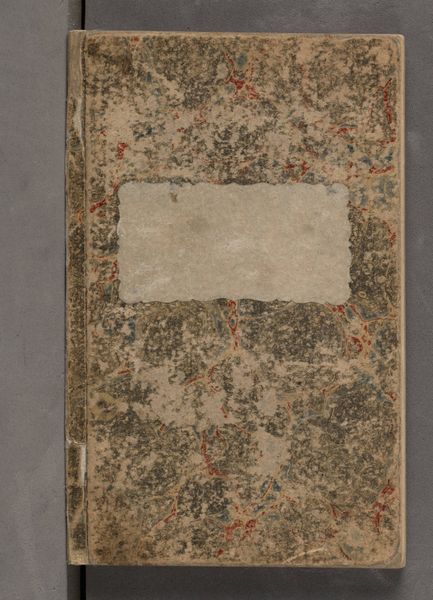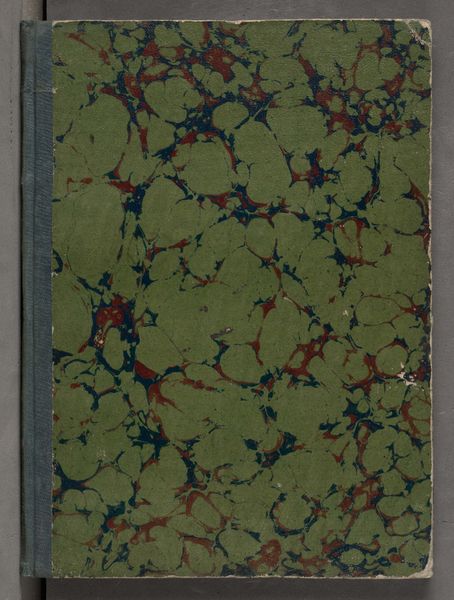
print, wood
#
wood texture
# print
#
book
#
pattern
#
organic pattern
#
wooden texture
#
wood
#
decorative-art
Copyright: National Gallery of Art: CC0 1.0
Editor: So, this is the cover of "An Essay on British Cottage Architecture," possibly from 1798, by James Malton. It looks like a print, maybe wood? The cover’s marbled pattern is pretty striking. How do you interpret this work beyond its obvious function as a book cover? Curator: It's fascinating to consider this book cover beyond its immediate purpose. We can see it as a reflection of the late 18th-century British societal values and the romanticized view of rural life. Consider the Arts and Crafts movement. Editor: How so? I see the pattern, but what does that tell me about architecture and social values? Curator: The marbled pattern itself is evocative. It imitates natural materials, maybe stone or wood grain. In a way, it hints at the organic integration of architecture within nature, a key theme within that time. Malton’s choice speaks to the political context, in that the cottage—and its inhabitants—stood as representations of traditional British values in contrast to increasingly urbanized areas. It's like, "what elements elevate simple design to cultural importance?". Editor: So, the cottage represents more than just shelter? It is about preserving cultural values? Curator: Precisely! And the deliberate artistic rendering of the cover elevates these "humble" dwellings. The cottage embodies cultural narratives about class, land, and national identity that have grown within the architectural canon to this day. Do you see it now? Editor: Yes, I do! That gives me a completely new way to appreciate not just the design, but the layers of meaning embedded in something as simple as a book cover. I wouldn't have seen that without your insight! Curator: My pleasure. These seemingly decorative choices speak volumes once we start asking questions about who they serve and whose stories they elevate.
Comments
No comments
Be the first to comment and join the conversation on the ultimate creative platform.













